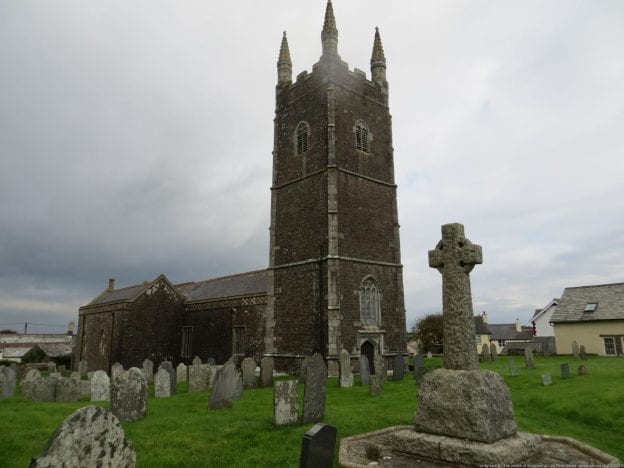Here’s Another Year Book/Plea Roll match: YB Pasch. 6 Henry VII pl 1 f 41b appears to be KB 27/919 m. 29.[i] It is a case from Devon, Walter Chapman v. Thomas Preston and others, and it’s one of those in which there is a line of argument/pleading in the YB which was clearly given up, so does not appear in the PR.
According to the plea roll, Walter Chapman appealed Thomas Preston of Teynton Drew [Drewsteignton], husbandman, John Wheddon of Chagford, yeoman; and Robert Blakehey of Teynton Drew, husbandman, for mayhem and breach of the king’s peace – though it was breach of the peace not of Henry VII, who, in 1491, was on the throne, but of Edward IV, who had been in charge in 1481, when the injury was allegedly inflicted.
Walter’s case was that he was in the peace of God and Edward IV, at Spreyton, on 22nd March, 21 Edw IV (1481) at about 8 a.m., when Thomas, John and Robert came,[ii] feloniously, contrary to the king’s dignity etc, lying in wait and assaulting Walter. They attacked his legs in a slightly jarringly non-symmetrical way: while Thomas went for his right leg, with a bill worth 2s (evidently a two handed weapon) the three others went for the left leg, John wielded a clubbe bound with iron (8d), Robert used a more basic clubbe (2d), and Richard brought to bear a Welsh bill (20d). The same thing happened to both legs as a result, however, the veins and nerves were ‘restricted and mortified’ and his leg became useless. Thus they feloniously mayhemed him.
After the usual words about pursuit, and offer to prove things, Thomas and Robert denied it and put themselves on a jury. John came up with a different plea, however, saying that he and Walter had reached a settlement, giving Walter 40s in full satisfaction for the wrong. This, he said, had happened quite soon after the injury, on 1st May 1481. Walter denied that a concord had been made.
The YB report ends up focused on an argument about a possible concord as well, but also discloses a ‘non-runner’ line of argument: it was about the injury itself, with a defendant (which seems to be John) praying that the court view the injury and see whether or not the plaintiff (Walter) was maimed. There seemed to be some doubt, and certainly a view that the defendant would necessarily lose if the court found that the injury was indeed a mayhem (so would not be able to plead a lack of guilt, for example). In this version, the defendant retreated from this to plead a concord instead – a less risky plea.
The YB also has some material on the offence itself, which does not correspond to the plea roll account. It says that the defendant could not be bailed because of the heinous nature of the offence – the plaintiff’s legs had been broken on a threshold. Quite why that is particularly bad is not clear to me. In addition, and perhaps inconsistently with its own story, it says that the bones were shown to the court. This is inconsistent if this was part of a viewing at the behest of the defendant, but might not be if either it was the plaintiff who insisted on showing his injuries, or if the bones shown were body-parts which had been separated from the plaintiff himself.
So what? Well:
- quite interesting to see a leg mayhem case: there aren’t too many of those
- also quite interesting to see the differences between YB and PR
- a good confirmation that such actions could be settled
- tantalising evidence about investigation of physical injury
- indication that these actions could go on for a very long period of time.
And, of course, there is also just the trainspotterish joy in coming up with a PR/YB ‘snap’.
GS
5/4/2024
[i] Earlier stages: AALT Page (uh.edu) AALT Page (uh.edu)
[ii] (with another man, Richard Michel, miller, but he was not present here)
Image – pretty church somewhere near the scene of the alleged crime.



